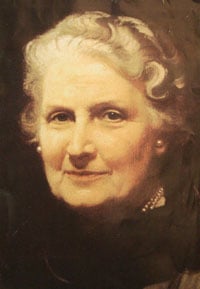 |
Continued from Part One:
The very nature of a Montessori classroom allows for children of varying personalities and learning styles to unify themselves into a community of caring individuals. Within this special environment the child may either choose to work alone or with others at any given moment. In fact, the use of a work mat is a concrete representation of a child’s intrapersonal needs being met in the classroom. Likewise, a child may choose to work with another individual and is at liberty to engage in pleasant conversation throughout the day. Here, one can identify another blend of Gardner’s theory in to Montessori pedagogy. The use of a mat to define a personal workspace is in direct correlation to Gardner’s theory of the Intrapersonal Intelligence. Children of this intelligence are not only capable of expressing their emotions well but also require private space and time which can be respected by the defined space a work mat creates. Additionally, Gardner identified the Interpersonal Intelligence as “the sensitivity one has towards others, along with the ability to work well with other people, understand others, and assume leadership roles (Driscoll & Nagel, 2005). The Montessori setting undoubtedly allows for children’s interactions with one another to enhance the educational experience.
Maria Montessori developed her approach to education based on scientific research and observation of young children. She realized the unique capabilities within each child which need only to be encouraged by the right environment in order to reach maximum potential. Montessori realized the significance of each area of intelligence in the materials and experiences she created in her schools. Remarkably, in the creation of her method, she seems to have touched upon many of the core operations of the eight intelligences described much later by Gardner’s Multiple Intelligence Theory (Vardin, 2003), as illustrated in the table below.
Gardner’s Multiple Intelligences in the Montessori Setting
Intelligence | Characteristics | Montessori Representation |
Linguistic | Play with words; enjoy stories; Interest in sounds of language | Sandpaper letters; Moveable Alphabet; Stories; writing – Language Area |
Logical/ Mathematical | Exploration of patterns; counting; Reasoning/problem solving | Knobless Cylinders, Solid Cylinders – Sensorial and Math Areas |
Spatial/ Visual | Visualization of concepts | Order in the environment – specific place for each material; Practical Life Area |
Bodily/ Kinesthetic | Strong motor skills and coordination; Learning through movement | All areas of classroom and curriculum studies. |
Musical | Ability to produce and appreciate pitch, rhythm; understanding of musical expressiveness | Montessori Bells; songs, rhymes; music specialists |
Naturalist | Classification of living things – plants, animals, features of natural word. | Geography and Social Studies curriculum; Care of Environment (indoor and outdoor) |
Intrapersonal | Understanding of one’s self; ability to discriminate and act on one’s feelings. | Respect of personal spaces; ability to choose to work alone |
Interpersonal | Ability to understand others and work well with together; availability of leadership roles. | Working in pairs or small groups; encouragement of interaction; mixed age setting |
Table 1
In order to fully appreciate Montessori’s influence and approach to education, one should begin with a study of her pioneering and innovative contributions to the profession. Her work likely inspired and supports contemporary human development theorists such as Piaget, Ericson, and Vygotsky. In our nation's ongoing debate on reforming the public school system, it would behoove policy makers and administrators to closely examine how the introduction of Montessori principles would enhance every child’s social, emotional, and cognitive needs.
References
Berk, Laura E. Child Development. Needham Heights: Massachusetts, 2000 (fifth edition).
Driscoll, Amy and Nacny G. Nagel. Early Childhood Education: Birth to 8. The World of Children Families and Educators. Pearson Educational Inc.: 2005 (third edition).
Gardner: Multiple Intelligences. (handout)

I love your table of multiple intelligences in a Montessori setting! Very thought provoking! :) Deb @ LivingMontessoriNow.com
ReplyDeleteThank you, Deb. I find it so amazing how these intelligences are represented so naturally in the Montessori setting. Thanks for reading.
ReplyDeleteSasha